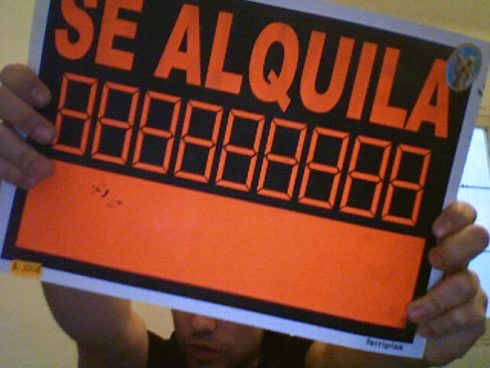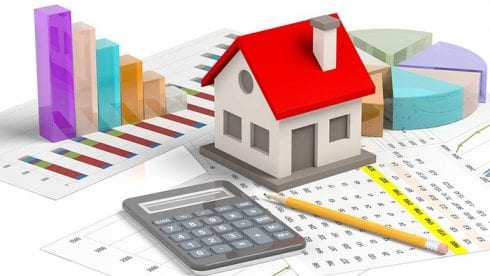I HAVE noticed a strong trend in recent years, accelerating since the pandemic, for Marbella to become a destination of choice for luxury home purchases.
It seemed to me that luxury home sales and purchases were becoming a growing part of the overall real estate market.
This was largely a phenomenon that was anecdotal, based on my experience. I wanted to confirm whether it was actually the case and not just my perspective, so I dug into the numbers.

Spain’s booming luxury market
The first place to start is to talk about Spain as a whole. The luxury real estate market in this country has experienced considerable growth, with high-net-worth individuals investing more in this segment.
Prices in the country’s luxury real estate market have increased by 10-20% in the past two years, according to Hiscox. Transactions for homes over 3 million euros increased by 55% in 2022 over 2021, with over 8,000 transactions registered last year.
That growth has not happened evenly across the country, as luxury purchases have tended to concentrate in a few major centres, such as Barcelona, Madrid, the Balearic Islands and Malaga province.
Malaga and the golden triangle
In fact, Málaga leads the luxury real estate market, with 2,500 homes for sale above 3 million euros, representing 34% of total luxury home sales in Spain.
The vast majority of these high-end homes are located in the so-called “golden triangle”, formed by Benahavís, Estepona and Marbella. As reported back in July in its review of the Hiscox study:
“At the end of 2022, homes over three million euros accounted for just over 3.5% (almost 2,900 homes) of the total number of real estate sales in Marbella and Benahavís. This figure represents a sharp increase compared to 2021, when 1,800 properties were sold, representing around 2% of the total. As for the current ‘stock’, homes over three million euros represent 6% of the total in Marbella and Benahavís.”
Impact on Marbella’s real estate prices
Not surprisingly, the rise in luxury housing has significantly impacted real estate prices in Marbella. Across all categories in Marbella rose by about 15% between June 2022 and June 2023. In fact, the average asking price reached 4,461 euros per square metre in December, which is more than double what it was 10 years ago. Back then, it was 2,080 Euros per square metre. This increase substantially outpaced both inflation and the rise in national housing prices.
Factors influencing Marbella’s property market
The first thing to say is that a significant part of the rise in prices in Marbella is a result of the paralysis that exists with regard to zoning. Marbella hasn’t had a zoning bylaw for over a decade now, and that has caused a shortage of available housing that will take years to work through, even once the new zoning law is finally accepted sometime this year.
However, another part of the price increases comes from Marbella’s attractiveness as a destination for high-net-worth individuals. They can see the luxury, infrastructure, amenities and are drawn to Marbella. Like attracts like. And pristine beaches and plentiful golf courses help too.
Implications for the general public
So, what does this mean for us mere mortals who aren’t movie stars or oil sheikhs or jet-setting billionaires? The first thing to say is that the growth in the luxury market in Marbella and the Costa del Sol is generally a good thing.
However, it is not without its drawbacks. Price rises in both rental and purchase prices make housing less affordable to those who aren’t wealthy. It is just harder overall to find long-term rental housing, as pointed out in this investment research note:
“The lack of long-term rental properties in Costa del Sol was the main story of Q1 this year. According to Idealista, while supply in Spain fell by 5% in Q1 to its lowest level since 2016, in Costa del Sol, it plummeted by 15%, one of the country’s largest drops. In Malaga’s capital, the deficit was considerably worse, with 27% fewer homes available in the first three months of the year compared to the same period in 2022.”
On the other hand, Marbella, being a destination for luxury seekers, provides work as well as improvements to the local infrastructure that benefits everyone. The clean beaches, diversity of restaurants, sports facilities, cultural activities and festivals benefit all of us.
Future outlook
Will the trend continue, or will sales and prices fall? That, of course, is the question on many people’s minds. And the disaster of the collapse in Spain in 2007 has left people permanently anxious. The short answer is: don’t panic.
It’s true that there has been a slowdown in 2023, but the lack of housing stock is greater than the drop in sales. The truth is we need more housing. In 2007, the problem was overbuilding of housing that was out of the price range of the people purchasing it, leading to a bursting (painful) bubble. And, while sales have fallen compared to the post-pandemic boom of pent-up demand, they have risen compared to pre-pandemic prices in 2019.
Even with the slowdown, transactions in luxury properties in early 2023 exceeded pre-pandemic levels in Q1 2019 by 18%. Data shows that in Spain in general, the demand for properties over two million Euros grew by 55% between 2022 and 2021. Next to this figure, the fall in luxury sales between 2023 and 2022 of 10.5% is neither frightening nor unexpected. Supply shortages will continue to put upward pressure on pricing for at least the next 3-4 years until additional housing stock becomes available.
Conclusion: a sustainable growth
Nobody wants a bubble. As I noted above, the last one in 2007 ended very badly. But what is happening in Marbella is not, I’m convinced, a bubble. Prices remain 22% below 2007 highs in the Costa del Sol. The restoration of a functioning zoning regime in Marbella will also ease, naturally and gently, the upward pressure over the course of the next couple of years.
My view is first that it’s nice to have my personal experience validated by impersonal statistics. Marbella and the so-called golden triangle are definitely experiencing the virtuous circle of an influx of luxury buyers, along with improved infrastructure from growing tax revenues.
It is true that we need more long-term rental options, and I hope that the regional government of Andalusia offers incentives to the many excellent developers along the Costa del Sol. But even with that caveat, I feel confident that Marbella and the cities around it are just getting started in a historic and overall positive transformation.








